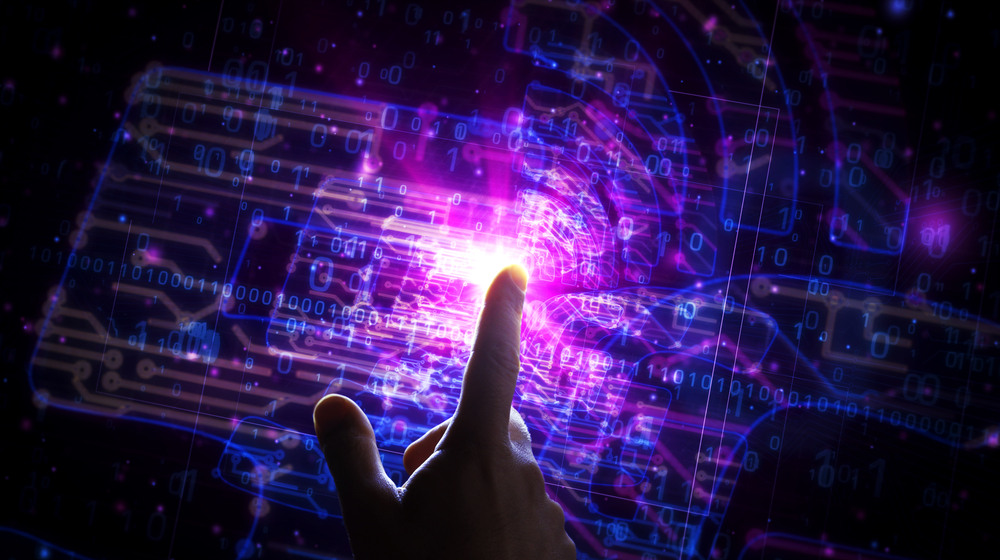IoT solutions have shifted paradigm shifts in how businesses operate, connect with customers, and optimise processes.
By connecting physical devices and assets to the internet, IoT solutions enable the collection and exchange of real-time data, facilitating intelligent decision-making, automation, and improved operational efficiency.
By deploying sensors and connected devices, businesses can capture and analyse data related to their assets, supply chains, customer behaviour, and more.
How Does IoT Work?
IoT (Internet of Things) solutions are at the forefront of digital business transformation and enable businesses to embrace the opportunities of Industry 4.0. Understanding IoT works is crucial for organisations leveraging this technology for digital business transformation. Let’s delve into the workings of IoT and its key components:
Devices and Sensors
At the core of IoT are interconnected devices and sensors. These devices range from everyday objects, such as appliances, wearables, and vehicles, to industrial equipment and infrastructure.
Sensors embedded within these devices collect data, including temperature, humidity, motion, location, and various other environmental parameters.
These devices have communication capabilities that allow them to connect to the internet for data transmission to the cloud or other edge computing platforms.
Connectivity
IoT relies on robust connectivity to enable seamless communication between devices and systems. Various connectivity options are available, including Wi-Fi, cellular networks, and Bluetooth.
The choice of connectivity depends on factors such as range, bandwidth, power consumption, and specific use case requirements.

Data Communication
Once connected, devices can transmit data to centralised platforms, cloud services, or edge computing systems. This data can be transmitted in real-time or periodically based on the application’s needs.
IoT solutions leverage protocols like MQTT (Message Queuing Telemetry Transport), CoAP (Constrained Application Protocol), and HTTP (Hypertext Transfer Protocol) to enable efficient and secure data communication between devices and the cloud.
Cloud Computing and Edge Computing
IoT generates massive volumes of data that must be processed, stored, and analysed. Cloud computing platforms provide the infrastructure and services to manage this data.
IoT devices send their data to the cloud for storage, analysis, and further processing. Cloud platforms offer scalability, accessibility, and advanced analytics capabilities, enabling organisations to derive valuable insights from the data generated by IoT devices.
How IoT Solutions Assist With Business Transformation
IoT solutions are vital in facilitating digital business transformation in the context of Industry 4.0 and the ongoing digital revolution. Let’s explore how specific IoT technologies assist with business transformation:
Wearable Technology
Wearable devices, enabled by IoT solutions, have the potential to revolutionise various industries. Wearables like smartwatches, fitness trackers, and augmented reality (AR) glasses provide real-time data and insights, enabling businesses to enhance productivity, safety, and employee well-being.
For instance, wearable devices in manufacturing environments can monitor worker health and safety parameters, track productivity, and provide instant access to relevant information, improving operational efficiency and worker safety.

5G connectivity
The advent of 5G connectivity brings ultra-fast speeds, low latency, and high device density, which are crucial for IoT applications. 5G enables seamless connectivity between IoT devices, facilitating real-time data transmission and enabling applications that require instantaneous response times.
This technology revolutionises industries such as autonomous vehicles, remote surgery, smart cities, and industrial automation, enabling businesses to optimise operations, improve efficiency, and unlock new opportunities for innovation and growth.
Digital Access Control
IoT-powered digital access control systems offer advanced security and convenience for businesses. These systems use IoT-enabled devices such as smart locks, access cards, and biometric scanners to provide secure and seamless access to facilities, assets, and data.
IoT-based access control systems offer features like remote monitoring, real-time alerts, and granular access permissions, enhancing security while streamlining access management processes. This technology ensures efficient access control, reduces security risks, and contributes to digital business transformation.
Cloud-Based Data Backups
IoT solutions leverage cloud computing to store and back up the vast data connected devices generate. Cloud-based data backups offer scalability, flexibility, and resilience, ensuring critical business data is securely stored and easily accessible.
In device failures, data loss, or disasters, businesses can recover and restore data from the cloud, minimising downtime and ensuring business continuity.
Digital Twins
Digital twins are known to be virtual representations of physical assets, products, or processes. IoT solutions enable the creation and management of digital twins by capturing real-time data from connected devices and systems.
Digital twins give businesses a holistic view of their assets, allowing for simulation, analysis, and performance optimisation.
Final Thoughts
IoT solutions are instrumental in driving business transformation in Industry 4.0 era. Wearable technology enables real-time data insights, enhancing productivity and safety in various industries.
The advent of 5G connectivity brings ultra-fast speeds and low latency, revolutionising IoT applications and unlocking new opportunities for innovation. Digital access control systems provide advanced security and convenience, streamlining access management processes.



